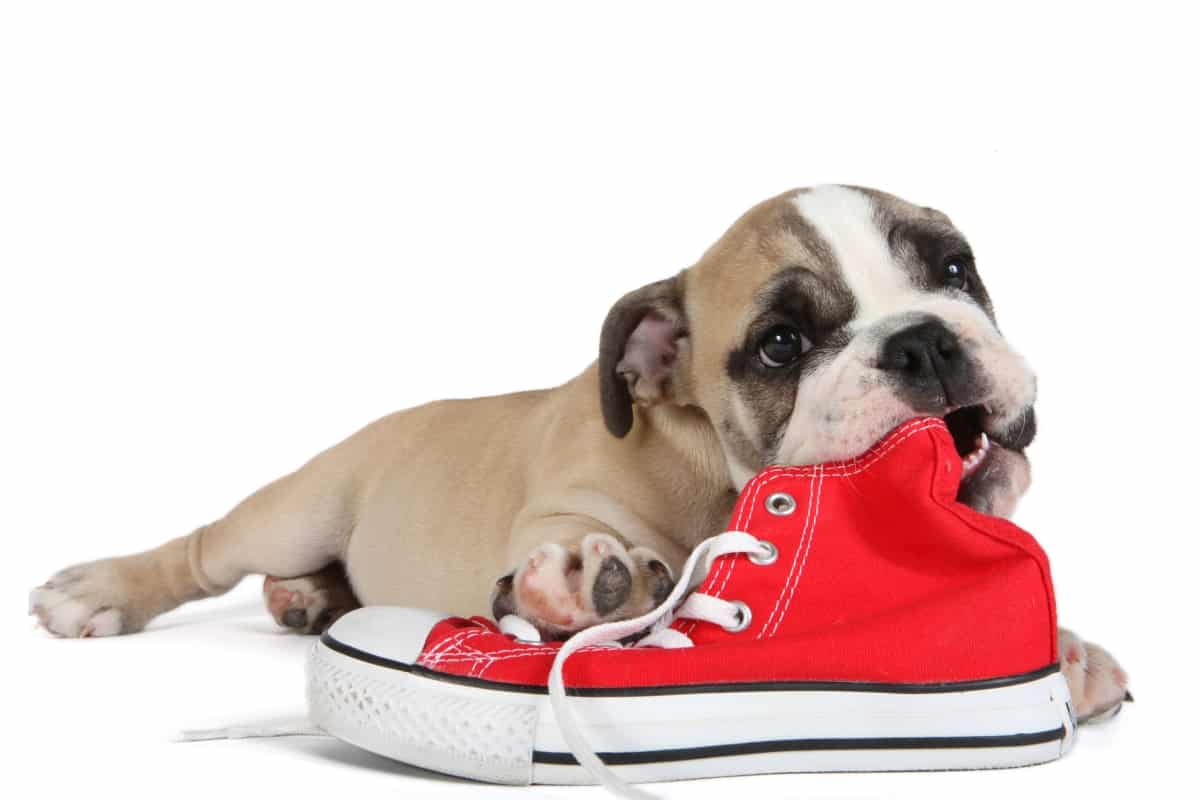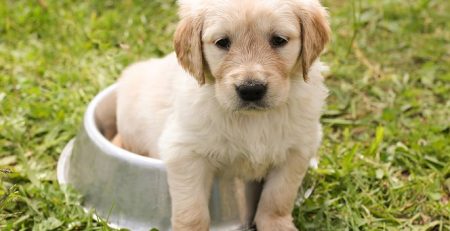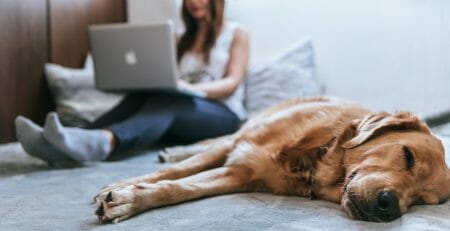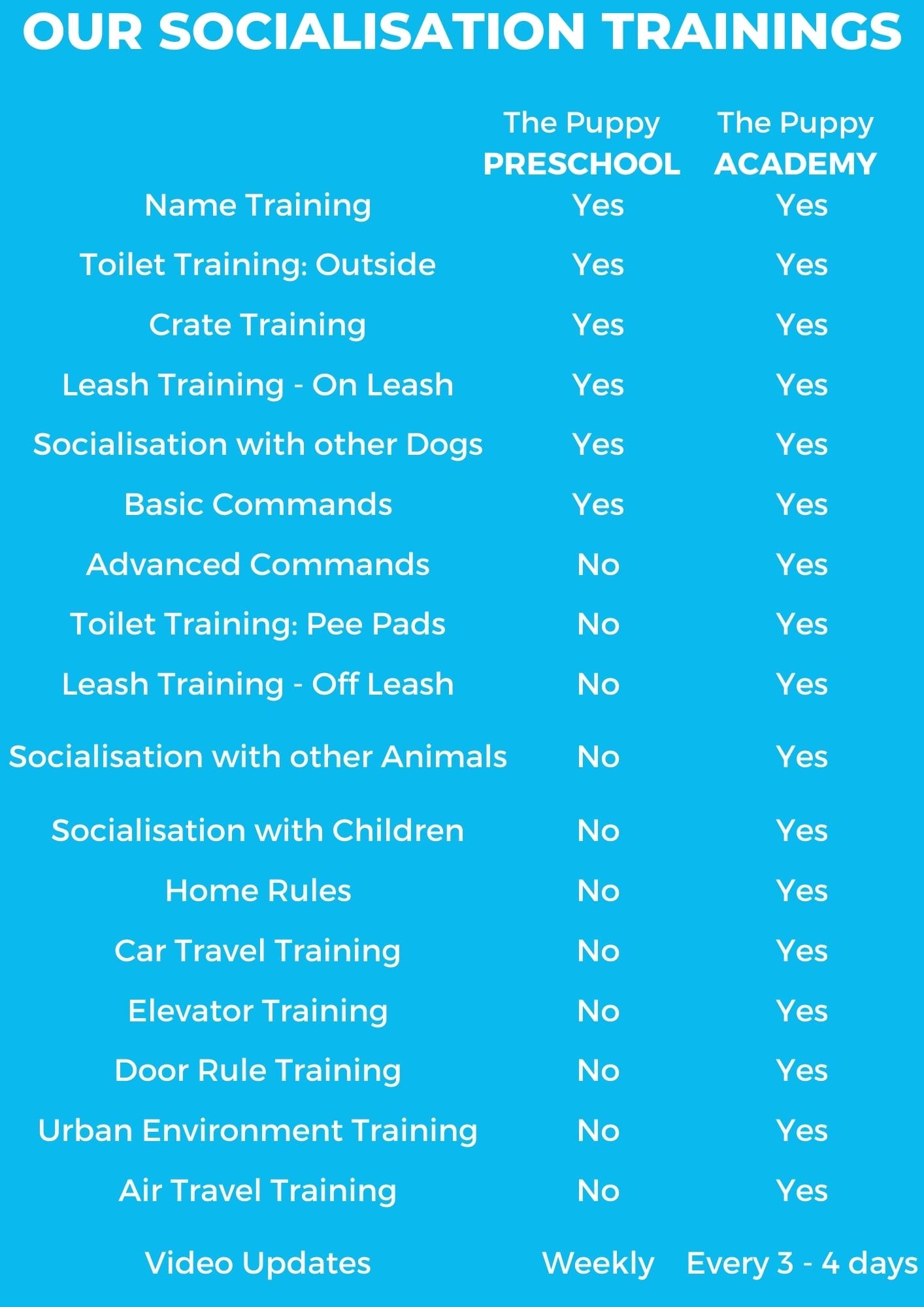My dog is chewing!
Chewing and gnawing are normal activities for dogs. The problem comes when dogs chew on things you really wish they wouldn’t touch, like your nice clean shoes, that new table, or your friend’s jacket. It can be frustrating, expensive, and even embarrassing when your dog seems to chew up everything in his/her path. Fear not! It is possible to prevent inappropriate chewing. Read on to find out how.
Why are they chewing?
Chewing is normal for puppies and dogs. It’s a way for them to explore the world by tasting and touching objects around them. Chewing can reduce anxiety and entertain a bored dog. Adult dogs will chew to keep their teeth clean and to strengthen their jaws. Puppies often chew to relieve pain from teething. Most dogs will happily chew on any toys or dog chews that you give them, but sometimes a dog will engage in inappropriate chewing.
Inappropriate chewing
Inappropriate chewing means that a dog is chewing on something it shouldn’t. There are many reasons for inappropriate chewing, including:
- Feeling bored: Dogs that don’t get enough exercise or mental stimulation will start to get bored, and bored dogs will invent ways to entertain themselves, such as chewing. This is very common with intelligent, active breeds.
- Teething: As a puppy loses its baby teeth and grows adult teeth, they will try to relieve the pain by chewing. Chewing can also help loosen baby teeth. At this time, puppies are also at an age where they already use their mouths to explore. The start of teething increases this chewing tendency. Luckily, this intensive chewing phase usually ends when the puppy is six months old.
- Poor diet: A diet can be poor quantity or poor quality. A poor quantity diet may leave a dog hungry and thus more likely to chew in an attempt to find food. Poor quality diets may lack important nutrients, and your dog may try to compensate by chewing objects such as stones.
- Seeking attention: Even negative attention counts as attention, and if your dog learns that he/she can get your attention by chewing “forbidden” objects, he/she might keep doing it.
- Early weaning: Sometimes dogs that are weaned too early (before 8 weeks of age) get into the habit of chewing or sucking at fabric. This behaviour may become compulsive; in this case, you might need the help of a professional, such as an animal behaviourist.
- Separation anxiety: Some dogs don’t cope well with being left alone. One way these dogs relieve their anxiety is by chewing. Dogs with separation anxiety often only chew, or chew most intensively, when left alone. They may also show other typical behaviours associated with separation anxiety, including barking, howling, whining, inappropriate urination/defecation, and restlessness. Separation anxiety is an issue that many dog owners experience.
What to do
- Give your dog something that he/she’s allowed to chew. Any item that you allow your dog to chew shouldn’t splinter or break, as these small sharp pieces can injure your dogs. You can buy chew toys from most pet shops. You can encourage your dog to chew on these items. Dogs sometimes get bored of toys, but you can buy a small selection of toys and rotate them so that your dog has “new” interesting toys to chew. You can also provide edible items to chew, such as pig ears or rawhide bones.
- Make sure to put away items that your dog might like to chew, such as leather shoes. Store them in a place that your dog cannot access, such as a closed wardrobe or a high shelf.
- Exercise your dog daily. Leaving the house for a walk in the park or woods will prevent your dog from getting bored. You should also play with your dog every day: just a few minutes once or twice a day should be enough.
- Get your dog some interesting toys, such as puzzle toys, activity balls, or Kongs. These should keep your dog entertained.
- Discourage your dog from chewing by spraying items in something that tastes nasty (but is non-toxic). You can purchase special chewing deterrents.
- Training is very helpful in this situation. You can consult a professional trainer for more details, but in general, praise your dog for chewing the “right” things, such as tooys. You can gently but firmly discourage chewing the “wrong” things with a vocal command such as “no”, and remove the item from your dog, ideally also providing them with an alternative item to chew.
- Crate train your dog. This is useful for puppies and young dogs, as you can leave them alone at home for a few hours without worrying about them chewing up your things.





















